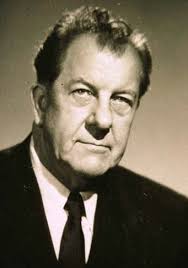
Gonstead procedures are the result of extensive clinical research by Dr. Clarence S.Gonstead D.C, founder of the world famous Gonstead Clinic of Chiropractic in Mount Horeb, Wisconsin and his associates. Doctor Gonstead’s fifty-five years of continuous practice and over four million chiropractic adjustments resulted in the most complete method of biomechanical analysis available for use by today’s doctors of chiropractic. So why don’t all chiropractors use this technique? Because the analysis takes more time and mastering the art of delivering a specific adjustment takes a LOT of practice and dedication.
The Gonstead Chiropractor goes beyond what many chiropractors consider a spinal assessment by conducting a thorough analysis of your spine using five criteria to detect the presence of the vertebral subluxation complex.
Visualization — Visualization is a way to cross reference all the other findings. Your chiropractor is an expert in looking for subtle changes in your posture and movement which could indicate problems. The Gonstead chiropractor will look for a head tilt, a

high shoulder, muscle abnormalities, high hip, deviations in the knees or ankles. All these are subtle clues of misalignments in the spine affecting the function of spine and nervous system.
Instrumentation — The instrument of choice in the Gonstead System of chiropractic is the Nervoscope. The Nervoscope detects uneven distributions of heat along the spine which can be

indicative of inflammation and nerve pressure. This instrument is guided down the length of your back and feels like two fingers gliding down each side of your spine. Instrumentation help the doctor pinpoint the area that is causing the problem.
Static Palpation — This is simply the process of feeling (or palpating) your spine in a stationary (or static) position. Your chiropractor will feel for the presence of swelling (or edema), tenderness and any abnormal texture or tightness in the muscles and other tissues of your back. Todays modern doctor takes a pass on the hands on approach and misses many clues as to what is causing the problem.

Motion Palpation — This process involves feeling the spine while moving and bending it at various angles. This enables the chiropractor to determine how easily or difficult each segment in your spine moves in different directions. It is important to find the vertebra that is fixed or has lost its proper range of motion and restore its normal function.
X-Ray Analysis — X-ray films enable your doctor to visualize the entire structure of your spine. This is helpful in evaluating posture, joint and disc integrity,

vertebral misalignments and ruling out any pathologies, or recent fractures that may be present or contributing to the patient’s condition. These full-spine radiographs are taken in the standing, weight-bearing position to fully substantiate the examination findings. Unfortunately, many non Gonstead doctors will not taking x-rays or use x-rays when determine what is a cause or how to correct the cause.
The Basic Principles of the Gonstead Method of Chiropractic Analysis
The Gonstead Concept of chiropractic begins with a basic biomechanical principle of physics. Every engineer, architect, builder and carpenter knows the importance of a proper foundation in constructing a building, for this insures durability and long life. Any slight change or shift in the foundation can cause a great amount of deviation in the top part of the structure and, perhaps, ultimately, its collapse.
The body’s foundation is formed by the pelvic girdle. When this bony structure consisting of hip bones and the lower bones of the back is level, there will be maximum balance and stability in the spinal column. When the pelvic girdle or any of the vertebrae (bones making up the spinal column) become tilted or rotated out of their proper position, dramatic changes may occur in the body. These misalignments can cause pressure on the discs that separate the vertebrae. (The condition of the disc is the key to the patient’s health problem in many cases.) Vertebra can become misaligned either from the cumulative effects of several minor episodes or from a single accident. Nature frequently is able to cope with these jolts to the spinal column without assistance. Sometimes, though, vertebrae tilted or rotated out of their normal position can be too much for nature to deal with effectively.
In order to more fully understand what occurs, we should know that the discs are really pads between the vertebrae and consist of a spongy substance surrounded by fibers of cartilage. When there is misalignment of a vertebra, there is uneven pressure on the disc causing it to swell and protrude. (One often hears this referred to as a slipped, herniated or ruptured disc.)
Chiropractors call this condition a SUBLUXATION when it results in the pinching or compressing of the nerves that run through that particular area. These compressed nerves often become inflamed and impede the proper transmission of impulses to the section of the body controlled by these nerves. A seemingly endless list of ailments and pain may be brought about by these subluxations.
Generally, misaligned vertebrae in the spine are easily recognized, particularly those in the upper portion of the vertebral column. However, less easily found and often overlooked are misalignments in the foundation or lower portions of the spine.
The ability to recognize and correct these misalignments forms an integral part of the Gonstead Concept. For example: When the lower portion of the spinal column has misaligned vertebra, the body tries to keep itself and its skeleton upright and straight. Often it compensates by causing a vertebra above to become misaligned. This is the body’s way of attempting to re-establish the normal perpendicular position of the body.
If just the top misaligned vertebra was adjusted, in cases where additional vertebrae are misaligned, only limited relief could result. This would not be getting to the source of the trouble. For complete and lasting results, all of the misaligned vertebrae must be identified and then a program can be initiated to restore them to their normal position. Every chiropractic case presents a different combination of misaligned vertebrae.
After a complete analysis, the Gonstead chiropractor is ready to deliver any necessary adjustments. The focus of the Gonstead adjustment is to be as specific, precise and accurate as possible, addressing only the problem areas (areas of subluxation). Great care is taken to ensure a bio-mechanically correct position and precise thrust to provide the most accurate and painless adjustment possible. It is the goal of your Gonstead doctor to restore and maintain optimal health by locating and correcting any interference to the nervous system caused by vertebral subluxation.
“Find the subluxation, accept it where you find it, correct it and leave it alone.” – C.S. Gonstead
